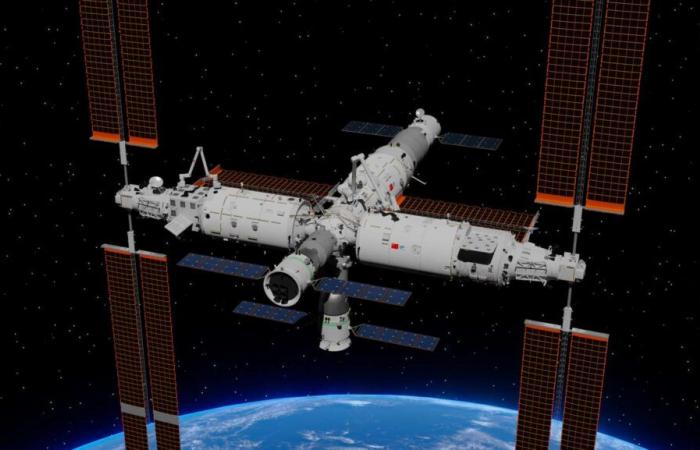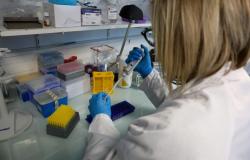The three astronauts of the mission ShenzhouShenzhou-19 joined the Chinese space station on October 30, after an uneventful flight from the Jiuquan launch site. Routine has settled into this new station, however the stakes are enormous.
The CSSCSS (China Space Station) has no other official name, unlike the two previous stations Tiangong 1 and 2, launched as a preamble to this one in 2011 and 2016, and de-orbited today. The CSS currently has three modules and its size is close to that of the old Russian station MirMirbut remains well below the dimensions of theISSISS.
Three modules
However, the CSS project is not finished. The station currently has three modules, Tianhe, Wentian and Mengtian. Three other modules can be added in the future, which could increase the number of scientific experiments to be carried out on board and there are already many of them, housed in 16 dedicated racks (cabinets).
Small feature: the station will enable the future Chinese Xuntian space telescope, the equivalent ofHubbleHubbleto dock there in order to be able to carry out maintenance without requiring space shuttles for this. As a reminder, NASA dispatched five missions with the Space Shuttle to Hubble, which was very expensive.
The Moon in the viewfinder
China is the first country in the world to maintain both a manned lunar program and a low-orbit space station. The United States and the Soviet Union first carried out their lunar programs before coming to space stations. Today, only India aims for the same thing in its space program, while NASA intends to delegate the post-ISS future to the private space industry to have a free hand with the Artemis program.
The CSS is a perfect laboratory for preparing astronaut missions to the Moon, which China aims for by 2030 at the latest! The country is consolidating its know-how in mattermatter procedures, automated space rendezvous, anti-collision alert with space debris and extravehicular spacewalks.
Between scientific experiments, station maintenance and educational activities, Chinese astronauts are ultimately doing the same thing as on board the ISS where they were never able to access. Little by little, China is acquiring experience comparable to the various partners of the ISS which will help it reduce the risk of the first lunar flights, like the next manned Artemis flights, planned for next year. The CSS obviously serves as a laboratory to test the technologies necessary for missions to the Moon or the constructionconstruction of a lunar base.
International and industry
Only the Shenzhou ship, derived from the ship’s architecture SoyuzSoyuzallows astronauts to reach the Chinese station. The cargo is brought by the Tianzhou ship. But China has already launched a tender program for the Chinese space industry (which has developed significantly over the past 10 years) to bring cargo to the CSS and bring it back to Earth. This program is similar to Commercial Cargo Program from NASA, which propelled SpaceXSpaceX in 2009, and to the call for tenders recently launched by the European Space Agency.
You can relive the takeoff of the Shenzhou-19 crew on the Livestream hosted by government media CCTV. In recent years, China has communicated more and more about its program, but still has the particularity of keeping the identity of the crew secret until the last moments before takeoff! © CCTV
Finally, China is counting on CSS as a tool to internationalize its human spaceflight program. Several countries, such as Pakistan, have become very close to China and could well send an astronaut there. This international component of the CSS echoes its international lunar base program which has already brought together several partner countries around the world.






